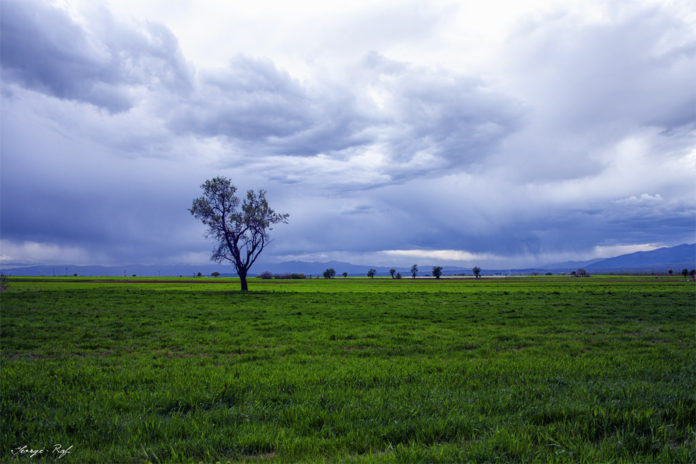A plain is a large area of flat land. It is one of the most common landforms on the earth’s surface. Throughout history, plains have been centers for settlement and population growth. Where soils are rich, plains also become a major center for food production.
Origins of the Plain
The deposition or erosion of sediments creates plains. Moving air, water, and ice can pick up small soil particles. When the moving force slows down, it loses the energy to transport the particles. A plain of deposited sediments then builds up and creates a plain. On the other hand, erosion by air, water, and ice can remove sediments from an area. This removal of materials also creates plains.
Alluvial and Flood Plains

The acitivity of rivers create alluvial plains. Running water has energy to pick up materials in high elevations. As the water moves to lower elevations it loses energy. At some point, the water lacks the energy to transport sediments. As a result, sediments are deposited. Over time, the sediment builds up and forms an alluvial plain at the base of a mountain. For example, Thailand’s capital city sits on an alluvial plain built by the Chao Phraya River.
Flood plains are similar to the alluvial plain. Areas that flood regularly, will deposit sediments and create a flood plain.
Loess Plain or Plateau
When air is moving fast enough, it has the energy to pick up sediments. As the wind slow down, it deposits the small particles. Loess is particles blown by the wind. Loess plains or plateaus are created where loess builds up over a period of time.
Glacial Plain
As a glacier moves across the Earth’s surface, it also has the energy to pick up materials. However, its energy comes from its mass rather than its speed. The depositing of materials takes place where the glacier comes to an end and melts.
Lava Plain
A lava plain is created by lava flows and volcanic activity. Over a long period of time, many such flows cover large areas and create a lava plain.
Erosional Plain
Unlike the previous examples, an erosional plain is created by the removal of materials. Moving air, water, and ice creates this plain through erosion. This type of plain is called a peneplain.
Reflections
Vocabulary
- deposition
- erosion
- plain
Notes
- A plain is an area dominated by flat lands.
- Depositional plains are created by the transport and depositing of sediments by moving air, ice, and water.
- Erosional plains are created by the removal of sediments.
Bibliography
- A Lithosphere Study Guide
- About the Surface of the Earth
- Landforms, World Landforms.

